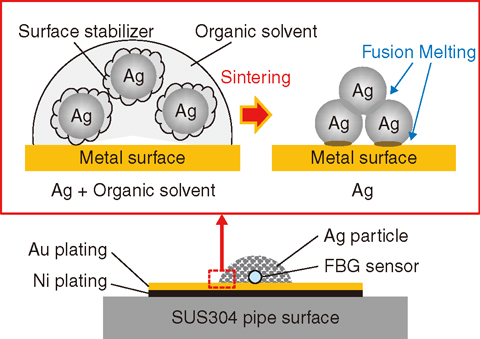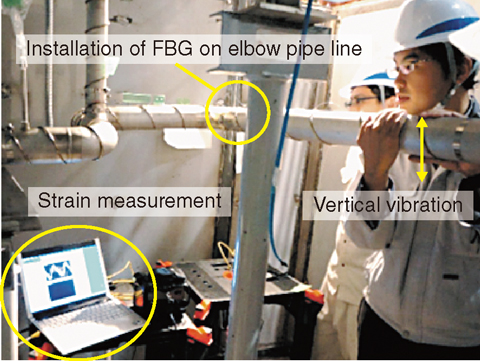
Fig.5-38 Adhesion mechanism for an optical fiber on the surface of a stainless steel plate (nano-sized silver particle adhesive)

Fig.5-39 Installation of heat-resistant FBG sensors in a Sodium Engineering Research Facility
Metal gradually loses elasticity in neutron irradiation environments such as nuclear power reactors or high energy proton accelerators. Thus, it is not useful to tighten assemblies with bolts and nuts; only welding on metal can work well.
However, when the metal is melted and then recoagulated, the excellent performance of the inherent metal tends to be lost. In particular, in the case where repetitive strain is applied to the welding joints, the risk of the fracture drastically increases. Therefore, structural health-monitoring is always requested to observe distortion in such welding parts.
At this time, commercially available strain gauges cannot be used in the high temperature condition. We have succeeded in developing a point-by-point method along an optical fiber core using femtosecond laser processing at the laboratory of the Sensing System Group Kansai Photon Science Institute, generating periodic index-modulation for heat-resistant internal construction. This internal construction is known as a Fiber Bragg Grating (FBG) applicable to the high temperature condition. The periodic index modulation along the optical fiber core represents the characteristic reflection peak wavelength. By placing the optical fiber in close contact with the pipeline, we can know the deformation to monitor the reflection peak shift of the FBG.
The most important issue facing the installation of the FBG sensor on the pipeline is a fine metal particle-based adhesive. The mechanism is shown in Fig.5-38. Adhesive force was activated under 200 ℃ and can be effective up to 900 ℃. Nano-sized silver adhesive was used here. Melting at the contact points between each particle effectively generated countless metal joints. Three-dimensional networks by joined nano-sized silver particles occupied the gaps between the optical fiber and the stainless steel. We developed all the adhesion techniques ourselves and proved the principle of applying them on a Sodium Engineering Research Facility, which is shown in Fig.5-39. The facility was constructed at Shiraki district in Tsuruga City in March 2015.
<Previous: 5-15 | Next: 6 HTGR Hydrogen and Heat Application Research >